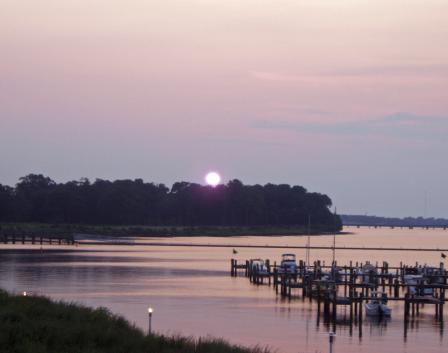Research Supporting Green Infrastructure Performance & Effectiveness in the Mid-Atlantic
We need effective approaches and tools to improve stormwater management across the country. Green Infrastructure (GI) has emerged as such a tool. EPA is conducting research and demonstration projects on the performance and effectiveness of GI practices at the urban watershed-level. EPA is funding research in Philadelphia and the Chesapeake Bay Watershed. This research will provide findings and best practices that other communities facing similar challenges can use.

Villanova University: Next Generation Volume Reduction Green Infrastructure Stormwater Control Measures in Support of Philadelphia’s Green City Clean Waters Initiative
The Villanova University project looks at the performance and economic feasibility of GI practices in an urban setting. The researchers will look at the infiltration capacities of GI technologies, and the evapotranspiration potential they present going forward. This research will fill in major gaps in how the urban water cycle works.
The project focuses on maximizing GI by measuring stormwater diverted and considering economic factors and constraints. This will provide meaningful information that communities can use to reduce stormwater runoff.
Temple University: An Integrated Strategy to Improve Green Infrastructure Approaches in Philadelphia
The Temple University research team is creating a green campus-monitoring program. This program allows researchers to demonstrate and evaluate GI technologies. The project will
- identify GI finance options,
- evaluate triple bottom line (people, planet and profit) benefits of GI,
- use a collaborative implementation approach, and
- consider how lessons learned can be applied to other urban areas.
The monitoring program will include a geophysical survey of soil that shows how soils and infiltration rates may differ across urban areas. Smart phones and tablets will be able to display key information to provide easy accessibility. This research will help us better understand urban infiltration and how GI performs under different conditions.
Temple University: An Integrated Strategy to Improve Green Infrastructure Approaches in Philadelphia
University of New Hampshire: Taking it to the Streets: Green Infrastructure for Sustainable Philadelphia Communities
The University of New Hampshire project will provide urban communities with usable resources by looking at social, economic, and technical barriers to GI. In addition, it will allow stakeholders to create a GI toolbox. The project focuses on creating strong partnerships that will leverage both resources and knowledge to increase the use of GI practices. Results will give people in urban areas the tools and strong institutional support to make stormwater management decisions.
Swarthmore College: Performance and Effectiveness of Urban Green Infrastructure: Maximizing Benefits at the Subwatershed Scale through Measurement, Modeling, and Community-Based Implementation
The Swarthmore College project will monitor, model and evaluate the performance of three specific GI sites in Philadelphia, PA. The project team will validate GI technologies performance in combined sewer overflow areas. They will also consider costs and benefits of the technologies. The research team will engage community partners at each step of the adoption and evaluation process. Specific activities include calibrating a subsurface flow model and evaluating landscapes on a subwatershed level. Communities can better protect their local watersheds and ecosystems if they understand the costs, benefits and performance of GI technology.
University of Pennsylvania: Enabling Citizens and Owners to Invest in Green Infrastructure in Philadelphia
The University of Pennsylvania project will provide new information on social and economic factors that affect GI decisions at the local planning level. The research team will use both quantitative and qualitative methods to look at local policies. They will identify barriers to stormwater GI use in Philadelphia and other cities. The team will review existing policies for financial investment faced by homeowners, businesses, local institutions and governments. They will generate decision models to estimate economic feasibility of GI use on private lands. The results will feed into a variety of useful new tools for local policy planning. One will be a web-based tool for choosing site-specific GI practices based on social and economic factors.
Pennsylvania State University: Center for Green Infrastructure and Stormwater Management

The Penn State Center for Green Infrastructure and Stormwater Management is one of two EPA-funded centers in the Chesapeake Bay region. It conducts research on community-based approaches to stormwater management using GI. The Center's goal is to understand and influence how local and regional stormwater management decisions are made to protect and restore the Chesapeake Bay. Penn State researchers approach this challenge as a complex system problem involving technical, social and economic aspects.
The benefits and values that green infrastructure provide:
- environmental
- aesthetic
- economic
- community
- wildlife
- educational
Researchers focus on how decision makers use this knowledge and understanding of these benefits and values. The integrated research projects explore why decision makers do not adopt green infrastructure, use visualization tools to communicate green design, present the benefits of green infrastructure, and seek opportunities to include better water quality benefits into decision-making.
Pennsylvania State University: Center for Green Infrastructure and Stormwater Management
University of Maryland: Sustainable Community Oriented Stormwater (S-COSM): A Sensible Strategy for the Chesapeake Bay
Researchers explore ways to improve urban stormwater conditions in the Chesapeake Bay watershed. They seek to increase the Best Management Practice (BMP) adoption using a Community-Based Participatory Research (CBPR) process. The research will help
- identify barriers to BMP adoption,
- spatially target stormwater hot spots with appropriate BMPs,
- filtered by adoption likelihood, and
- lower BMP adoption thresholds.
The researchers expect to provide data on barriers to BMP adoption in relation to social factors in diverse communities, a decision tool to jointly size and target the biophysical and social efforts required for efficient and sustainable stormwater improvement, and data on the effectiveness of CBPR instruments in lowering BMP adoption thresholds
